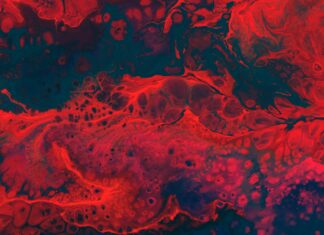Image colorization generally refers to the process of adding color to black and white or grayscale images. This can be done manually, but there are also automated tools and algorithms designed to colorize images. Here’s a general exploration of key aspects related to image colorization:
1. Image Colorization Overview: Image colorization is the process of assigning colors to a grayscale or black-and-white image to make it appear as if it were originally captured in color. This process can be applied to historical photographs, movie frames, or any monochromatic image.
2. Manual vs. Automated Colorization: Colorization can be done manually by artists or designers, carefully selecting colors for different parts of an image. On the other hand, automated colorization tools use algorithms, often based on machine learning, to predict and apply colors to different regions of an image.
3. Deep Learning and Neural Networks: Many modern image colorization tools leverage deep learning techniques and neural networks. These models are trained on large datasets of colored images to learn patterns and relationships between grayscale inputs and their corresponding colored versions.
4. Research and Development: Image colorization is a subject of ongoing research and development in the field of computer vision and image processing. Researchers are continually working on improving the accuracy and realism of colorization algorithms.
5. Popular Colorization Models: Several popular deep learning models have been developed for image colorization, such as DeOldify, which utilizes Generative Adversarial Networks (GANs) to generate vibrant and realistic colorizations.
6. Challenges in Colorization: Despite advancements, colorization still faces challenges, especially in accurately representing complex scenes or fine details. The algorithms may sometimes produce unrealistic colors or struggle with ambiguous areas in images.
7. Application in Film and Photography: Image colorization has applications in restoring and enhancing historical photos and movie footage. Colorizing old films, for example, can provide a fresh and engaging viewing experience for modern audiences.
8. Ethical Considerations: The colorization of historical images or films raises ethical considerations. While it can make the content more relatable to contemporary viewers, it’s essential to consider the potential impact on the historical accuracy and context of the original material.
9. User-Friendly Tools: Some colorization tools are designed to be user-friendly, allowing individuals without advanced technical skills to apply color to their photos easily. These tools often utilize simplified interfaces and automated processes.
10. Community and Artistic Expression: Image colorization has become a form of artistic expression, with communities forming around the sharing of colorized images. Artists and enthusiasts often use these tools to breathe new life into historical or iconic black-and-white visuals.
11. Training Data and Generalization: The effectiveness of automated colorization heavily relies on the quality and diversity of the training data. Models trained on a broad range of images can better generalize and produce more realistic colorizations. Researchers often curate datasets that span different time periods, genres, and visual styles to enhance the model’s versatility.
12. Real-Time Colorization: Advancements in hardware capabilities, particularly Graphics Processing Units (GPUs) and Tensor Processing Units (TPUs), contribute to the possibility of real-time image colorization. This is particularly relevant for applications where instant feedback or dynamic colorization is required.
13. Image Segmentation Techniques: Some sophisticated colorization models incorporate image segmentation techniques. These techniques help in identifying different objects or regions within an image, allowing for more precise and context-aware colorization.
14. Integration with Graphic Design Tools: As image colorization gains popularity, there is an increasing trend of integrating these tools with graphic design software. This allows designers to seamlessly incorporate colorization into their creative workflows and explore various color schemes for their projects.
15. Hybrid Approaches: Some colorization approaches combine automated algorithms with manual input. These hybrid models allow users to have more control over the colorization process, making it a collaborative effort between the algorithm’s predictions and the user’s artistic choices.
16. Continued Innovation: The landscape of image colorization continues to evolve, with ongoing innovations addressing its limitations and expanding its applications. Researchers and developers explore novel architectures, training methodologies, and post-processing techniques to refine the quality of colorized images.
17. Accessibility and Online Platforms: User-friendly colorization tools have become accessible on various online platforms. These platforms often provide a simplified interface, allowing users to upload their images and receive colorized results without the need for advanced technical skills.
18. Artistic Styles and Filters: Beyond realistic colorization, some tools offer the ability to apply artistic styles or filters to images. This artistic enhancement adds a layer of creativity, allowing users to experiment with different visual aesthetics beyond mere color replication.
19. Limitations in Grayscale Information: A challenge faced by colorization models is the limited information available in grayscale images. The absence of color data in certain regions may result in ambiguous predictions, impacting the overall accuracy of the colorization process.
20. Future Trends and Challenges: Looking ahead, the field of image colorization is likely to witness further advancements. Addressing challenges related to fine details, improving color realism, and exploring applications in augmented reality are areas where researchers and developers are expected to focus their efforts.
Image colorization is a multifaceted field that encompasses diverse techniques and applications, ranging from historical photo restoration to creative artistic expression. The integration of deep learning, real-time processing, and user-friendly interfaces has significantly enhanced the accessibility and popularity of colorization tools. Advances in the field, such as the incorporation of image segmentation, hybrid approaches, and exploration of artistic styles, contribute to the evolving landscape of image colorization. Despite the progress made, challenges related to fine details, color realism, and the limitations of grayscale information persist. Looking forward, future trends are expected to focus on addressing these challenges, exploring applications in augmented reality, and pushing the boundaries of what is achievable in the realm of image colorization. The continued collaboration between researchers, developers, and creative communities promises exciting developments and innovations in this dynamic field.
In conclusion, image colorization is a dynamic field that encompasses a range of techniques and applications, from historical photo restoration to creative artistic expression. Advances in deep learning, real-time processing, and user-friendly interfaces contribute to the expanding accessibility and popularity of colorization tools. As the technology continues to progress, it will be fascinating to observe how these developments shape the future of image colorization and its integration into various creative and practical domains. image colorization involves the process of adding color to black-and-white or grayscale images, with both manual and automated approaches. Automated colorization often relies on deep learning models trained on large datasets. It has applications in various fields, including film restoration and historical photo enhancement. Ongoing research aims to address challenges and improve the accuracy of colorization algorithms. It’s also essential to consider ethical considerations, especially when colorizing historical content. If “Colorizer” refers to a specific tool or technology introduced after my last update, I recommend checking the latest sources for detailed and up-to-date information.


















